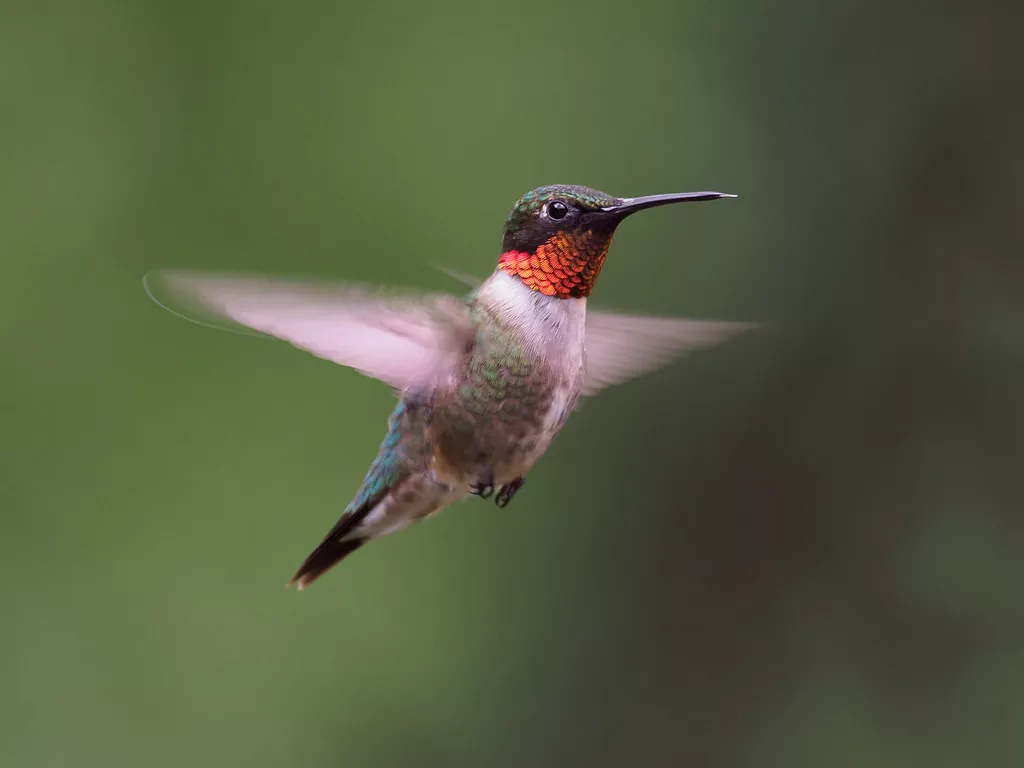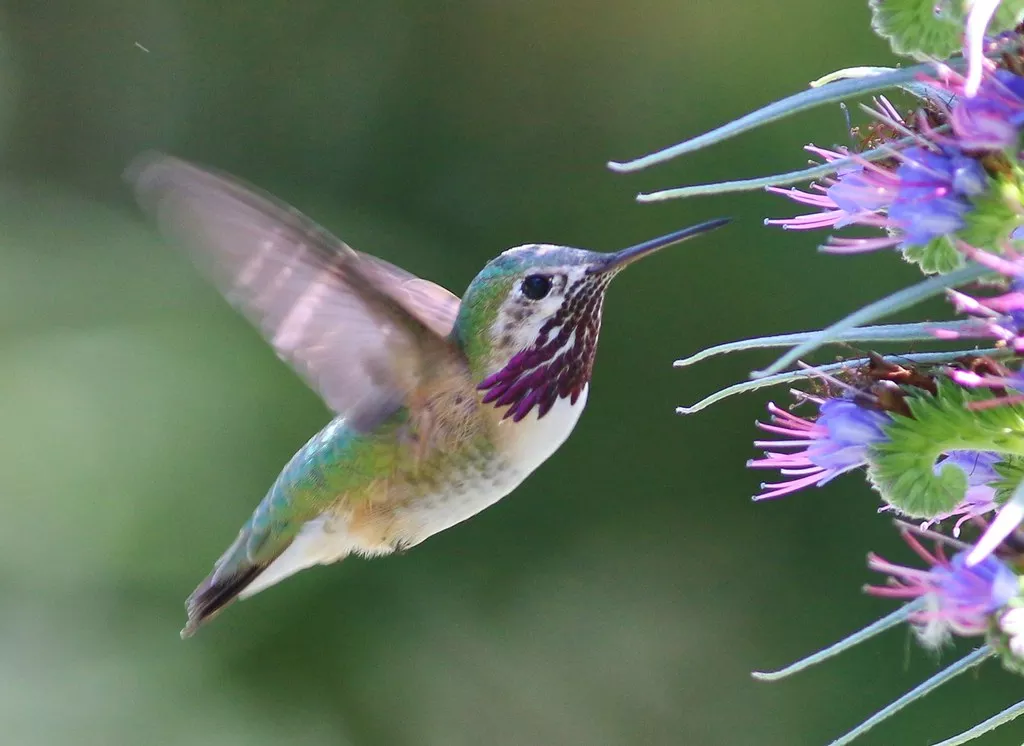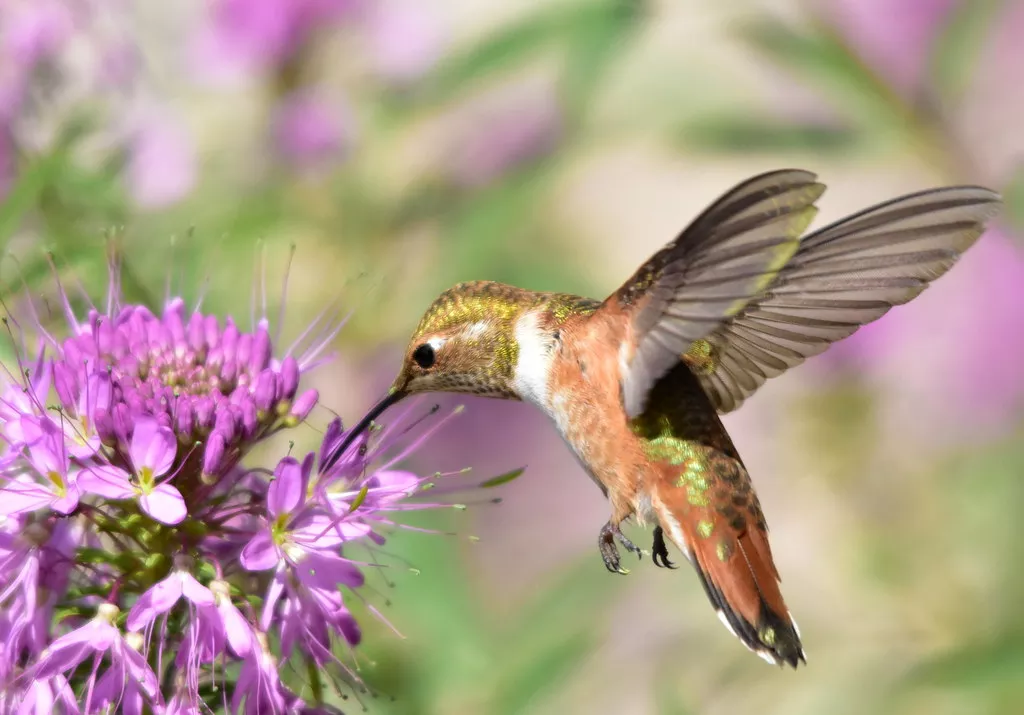Maine is home to a diverse range of bird species, including several types of hummingbirds. These small and colorful birds are known for their remarkable flying abilities and are a favorite of birdwatchers and nature enthusiasts alike. In this blog post, we’ll take a closer look at the different types of hummingbirds found in Maine, their habitats, behaviors, and conservation status.
From the common and vibrant Ruby-throated Hummingbird to the rare and elusive Rufous Hummingbird, we’ll explore the fascinating world of these tiny creatures and their roles in Maine’s ecosystems. We’ll also provide tips on how to spot and identify hummingbirds in the wild, as well as resources for further reading and exploration.
Whether you’re an experienced birdwatcher, a nature lover, or simply curious about the wildlife in your area, we invite you to join us on a journey to discover the amazing hummingbirds of Main
4 Types of Hummingbirds in Maine
- Ruby Throated Hummingbird
- Calliope Hummingbird
- Rufous Hummingbird
- Mexican Violetear
Ruby-throated Hummingbirds

Image Source
- Scientific name: Archilochus colubris
- Lifespan: 3 to 5 years in the wild
- Weight: 2.5 to 4 grams
- Size: 7 to 9 cm (2.8 to 3.5 inches) in length, with a wingspan of 8 to 11 cm (3.1 to 4.3 inches)
- Origin: Found throughout eastern North America, from southern Canada to the Gulf of Mexico, as well as in some parts of Central America during migration.
The male Ruby-throated Hummingbirds have an iridescent red throat, and both sexes have bright green throats and back with gray-white undersides. Female Ruby-throated Hummingbirds have white undersides, greenbacks, and brownish crowns and sides.
The only hummingbird species that breeds in eastern North America is the Ruby-throated Hummingbird, which subsequently migrates farther south to Central America. Some travel across Texas along the coast or over the Gulf of Mexico. For breeding, they begin to arrive in the deep south in February and may not reach the northern states and Canada until May. They go south In September and August.
These little birds fly from one nectar source to another, catching insects in the air or on the webs of spiders. They will sometimes rest on a tiny branch, but because of their short legs, they can only shuffle along a perch and can’t walk.
The best locations to look for them outside in the summer are flowering gardens or forest margins. They are very widespread in urban areas, particularly around nectar feeders.
Male Ruby-throated Hummingbirds are aggressive in the protection of feeders and flowers. After mating, they do not stay around for very long and may migrate by early august.
Ruby-throated females make their nests on thin branches out of thistle or dandelion down that are bound together by spider silk. They lay 1-3 eggs that are only 0.6 inches in diameter (1.3 cm)
Calliope Hummingbird

Image Source
- Scientific name: Selasphorus calliope
- Lifespan: 3 to 5 years in the wild
- Weight: 2 to 2.5 grams
- Size: 7 to 8 cm (2.8 to 3.1 inches) in length, with a wingspan of 11 cm (4.3 inches)
- Origin: Found in western North America, from southern Canada to Mexico
The Calliope Hummingbird, the tiniest bird in America with the size of a ping pong ball, travels more than 5000 miles annually from Mexico to Canada and back. Moreover, they fight valiantly to protect their territory and even pursue Red-tailed Hawks.
Male Calliope Hummingbirds have shiny green backs and sides, brilliant magenta throats (known as the gorget), and black tails. The underside of females is more pinkish-white than white, unlike that of males, who have iridescent throats.
They migrate in spring from the Pacific Coast to breeding grounds in California, Colorado, and up to northern states and Canada, They migrate pretty early and arrive between the middle of April and the beginning of May.
Their nests are often found on evergreen trees and may be reused or built over an older nest.
Rufous Hummingbird

Image Source
- Scientific name: Selasphorus rufus
- Lifespan: 3 to 5 years in the wild
- Weight: 2.7 to 4.3 grams
- Size: 7 to 9 cm (2.8 to 3.5 inches) in length, with a wingspan of 11 cm (4.3 inches)
- Origin: Found in western North America, from Alaska to Mexico
Rufous Hummingbirds are bright orange on the back and belly, have a white patch below the neck, and have an iridescent red throat. The females have a pale belly and a back that is greenish-brown and rusty in color.
As compared to their size, rufous hummingbirds have one of the longest migration routes, covering up to 4000 kilometers on each trip. They move south to Mexico and the Gulf Coast to spend the winter after breeding in northwest Alaska.
In the spring, they go north along the Pacific Coast, and in the late summer and autumn, they pass past the Rocky Mountains.
The main sources of food for rufous hummingbirds are nectar from vibrant tubular flowers and insects including gnats, midges, and flies. As they climb higher into the trees, they utilize spider webs and soft plant down to bind their nest together. They deposit one or two tiny, white, 0.5-inch (1.3-centimeter) eggs.
They are aggressive and will attack any hummingbird, even larger or resident during migration. They’re short-lived during migration and frequently hunt other hummingbirds. Mountain meadows and winter forests are their home.
Mexican Violetear

Image Source
- Scientific name: Colibri thalassinus
- Lifespan: Up to 8 years in the wild
- Weight: 6 to 7 grams
- Size: 9 to 10 cm (3.5 to 3.9 inches) in length, with a wingspan of 12 to 14 cm (4.7 to 5.5 inches)
- Origin: Found in montane forests of Mexico and Central America.
Mexico Violetears, medium-sized hummingbirds with violet patches on their heads and breasts, are metallic green.
Mexican Violetears may be found as far south as the highlands of Bolivia and Venezuela. They breed in forests in Mexico, Central America, and Nicaragua. In particular in Central and Southern Texas, non-breeding Mexican Violetears have been seen to travel northward into the United States.
Conclusion
Maine has wonderful hummingbird viewing. The Ruby-throated Hummingbird may be seen throughout the state during their migratory season, despite its lesser reputation. Watching these small, colorful birds flit about gardens and sip on nectar from flowers and hummingbird feeders is fun. Plant native Maine flowers like bee balm, cardinal flower, and columbine and use a sugar water hummingbird feeder to attract them. Create a pleasant setting to see these wonderful birds up close. Maine is a great place to see hummingbirds in their native environment, whether you’re an expert birdwatcher or just starting out. Next time you’re in Maine’s environment, look for these interesting and gorgeous hummingbirds.
Frequently Asked Questions (FAQs)
Q: When do hummingbirds arrive in Maine?
A: Hummingbirds typically arrive in Maine in late April or early May and can be seen throughout the summer months. However, exact arrival dates can vary depending on migration routes and weather patterns.
Q: What species of hummingbirds can be found in Maine?
A: The most common species of hummingbird found in Maine is the Ruby-throated Hummingbird. However, other species such as the Rufous Hummingbird and Black-chinned Hummingbird have been spotted in the state as well.
Q: How can I attract hummingbirds to my yard in Maine?
A: Hummingbirds are attracted to brightly colored flowers, especially those with tubular shapes that allow them to easily feed on nectar. In Maine, popular flowers for hummingbirds include bee balm, cardinal flower, and columbine. You can also hang hummingbird feeders filled with a mixture of water and sugar (4 parts water to 1 part sugar) to supplement their nectar intake.
Q: What is the best time of day to see hummingbirds in Maine?
A: Early morning and late afternoon are when hummingbirds are most active due to lower temperatures and ample nectar. However, they can be seen throughout the day as they search for food.
Q: Do hummingbirds migrate through Maine?
A: Yes, many species of hummingbirds migrate through Maine on their way to and from their breeding grounds. Some birds migrate hundreds of kilometers from Central and South America to North America for summer nesting.
Q: How can I help protect hummingbirds in Maine?
A: You can help protect hummingbirds by providing a habitat with plenty of nectar-rich flowers, avoiding the use of pesticides and herbicides in your yard, and keeping your hummingbird feeders clean and free of mold. You can also support conservation efforts by donating to organizations that protect hummingbirds and their habitats.


![12 Beautiful Blue Birds in Maine [Images + IDs]](https://birdsology.com/wp-content/uploads/2023/09/52109509501_22164e9350_b-600x400.jpg.webp)
![28 Ducks in Maine [Images + IDs]](https://birdsology.com/wp-content/uploads/2024/01/king-eider-600x400.jpg.webp)
![8 Species Of Hawks In Maine [Images + Ids]](https://birdsology.com/wp-content/uploads/2023/03/26566697545_31bbfc052c_b-600x400.jpg.webp)
![3 Types of Doves in Maine [Images + IDs]](https://birdsology.com/wp-content/uploads/2023/09/51966837857_e62c6fbc37_b-600x400.jpg.webp)
